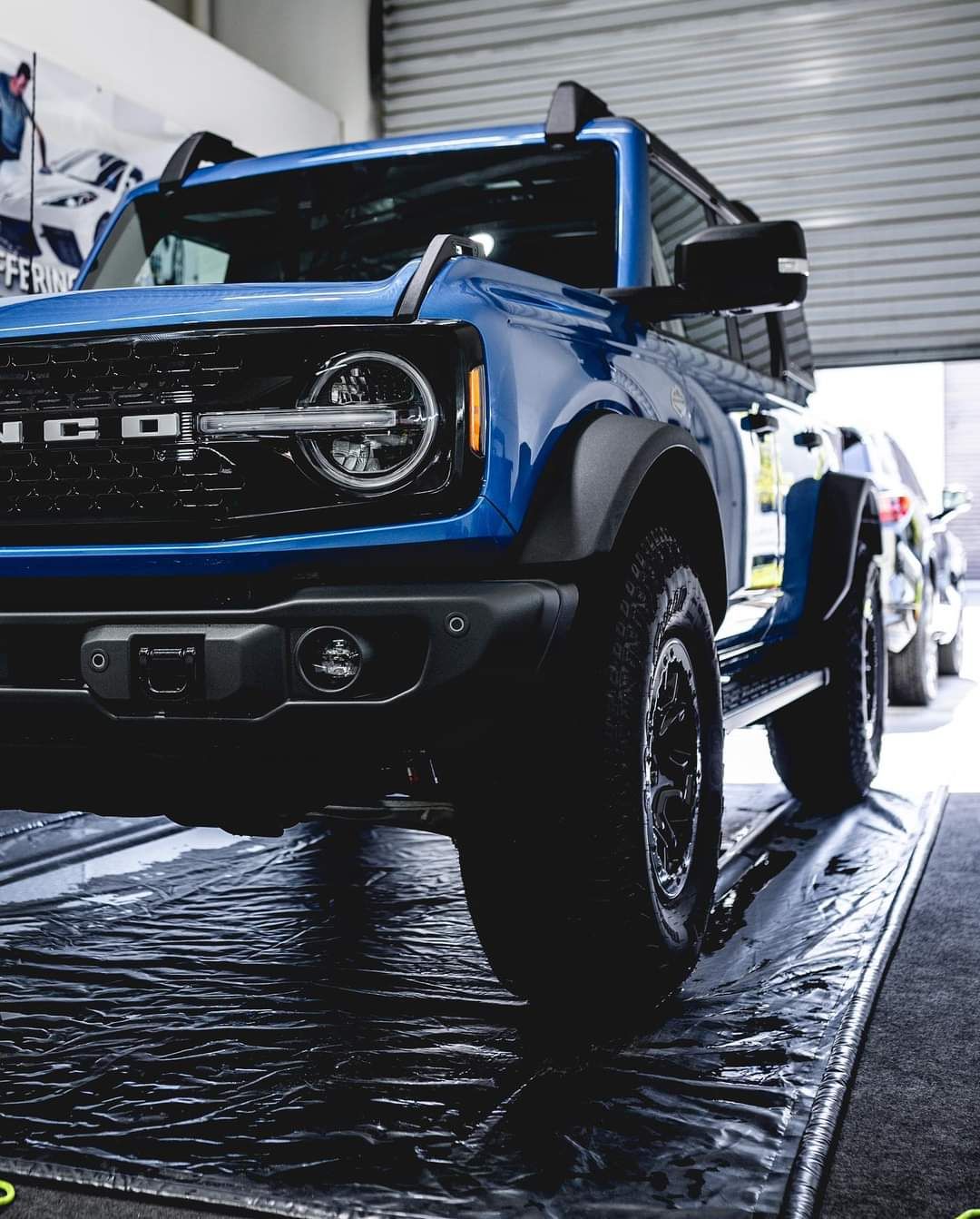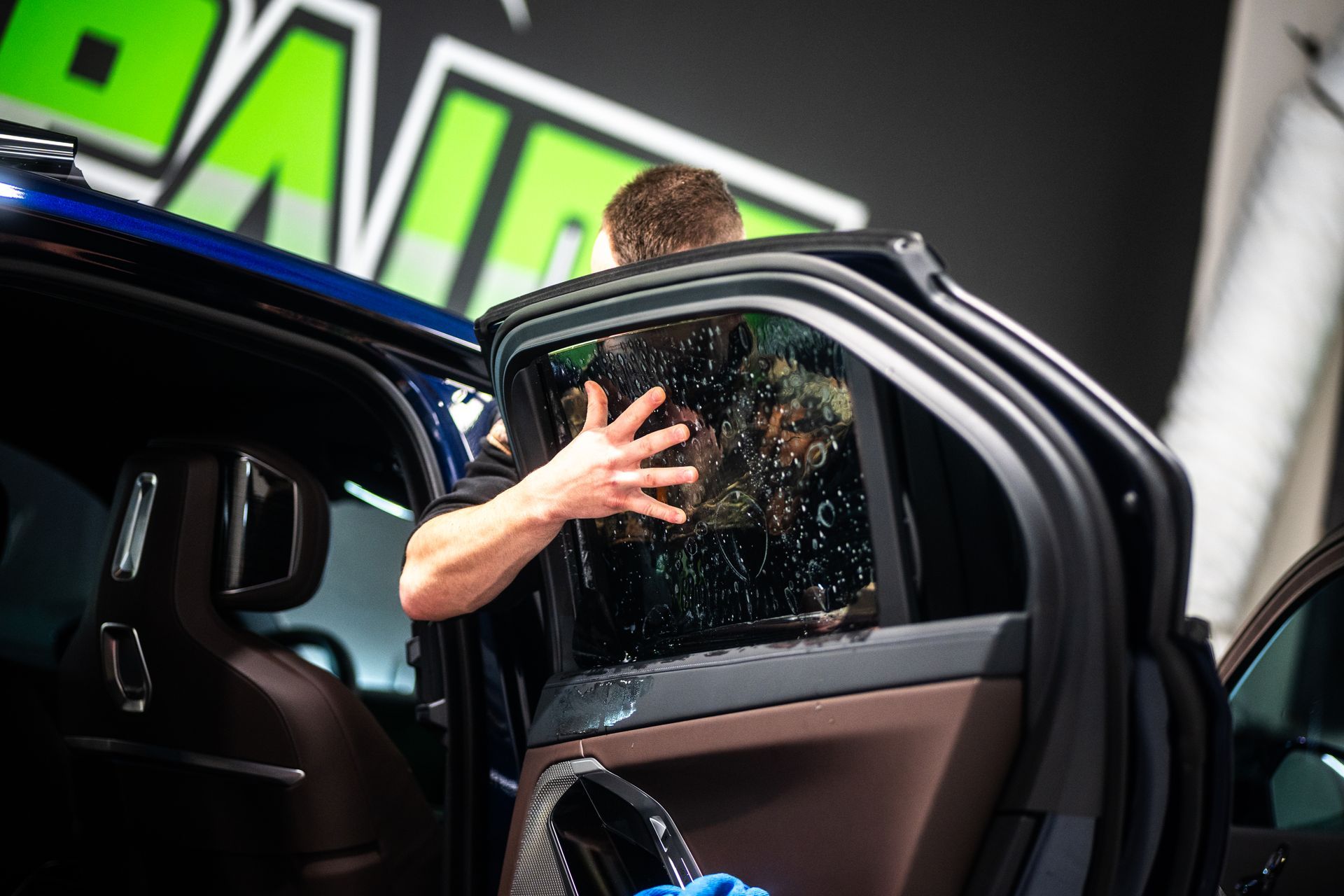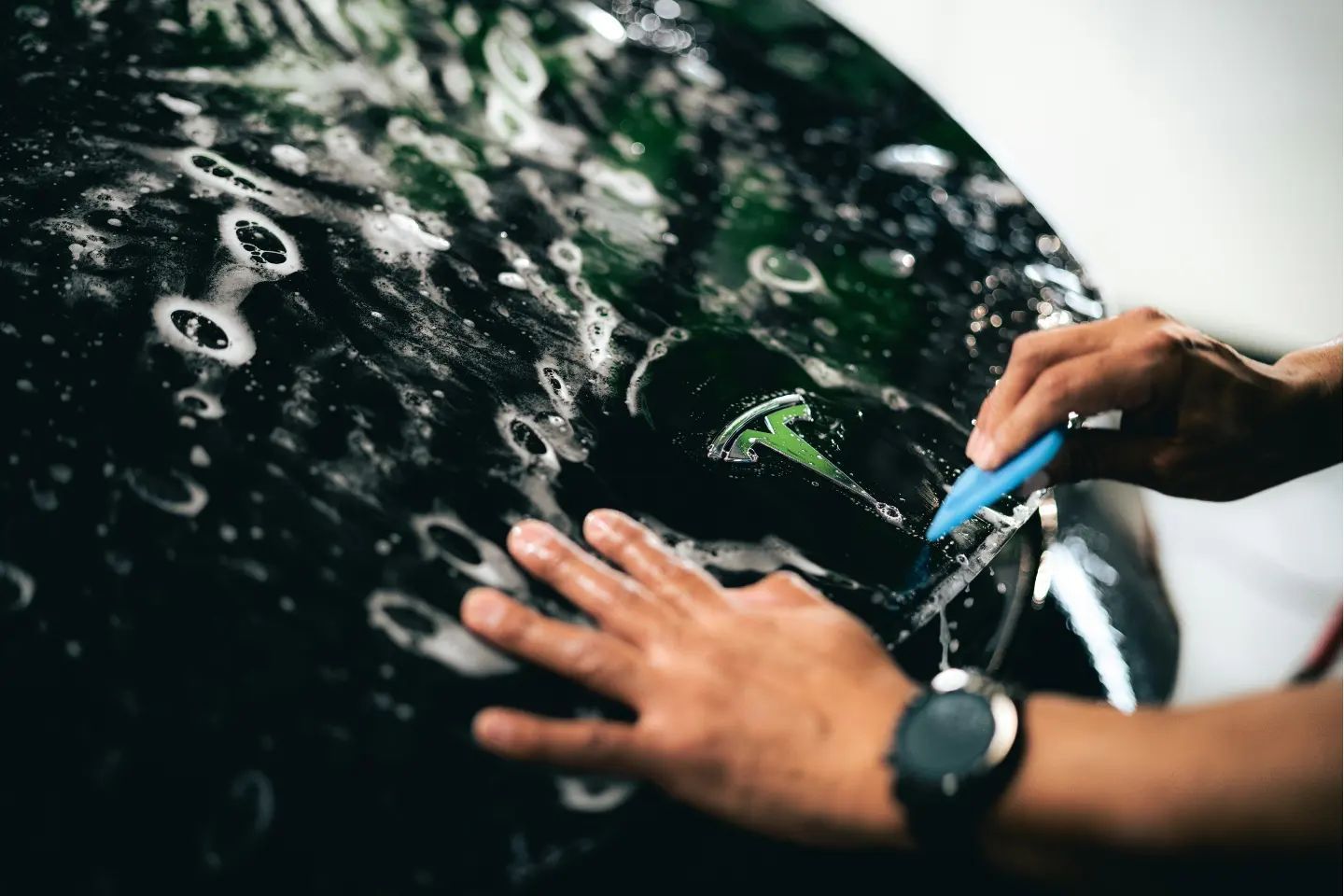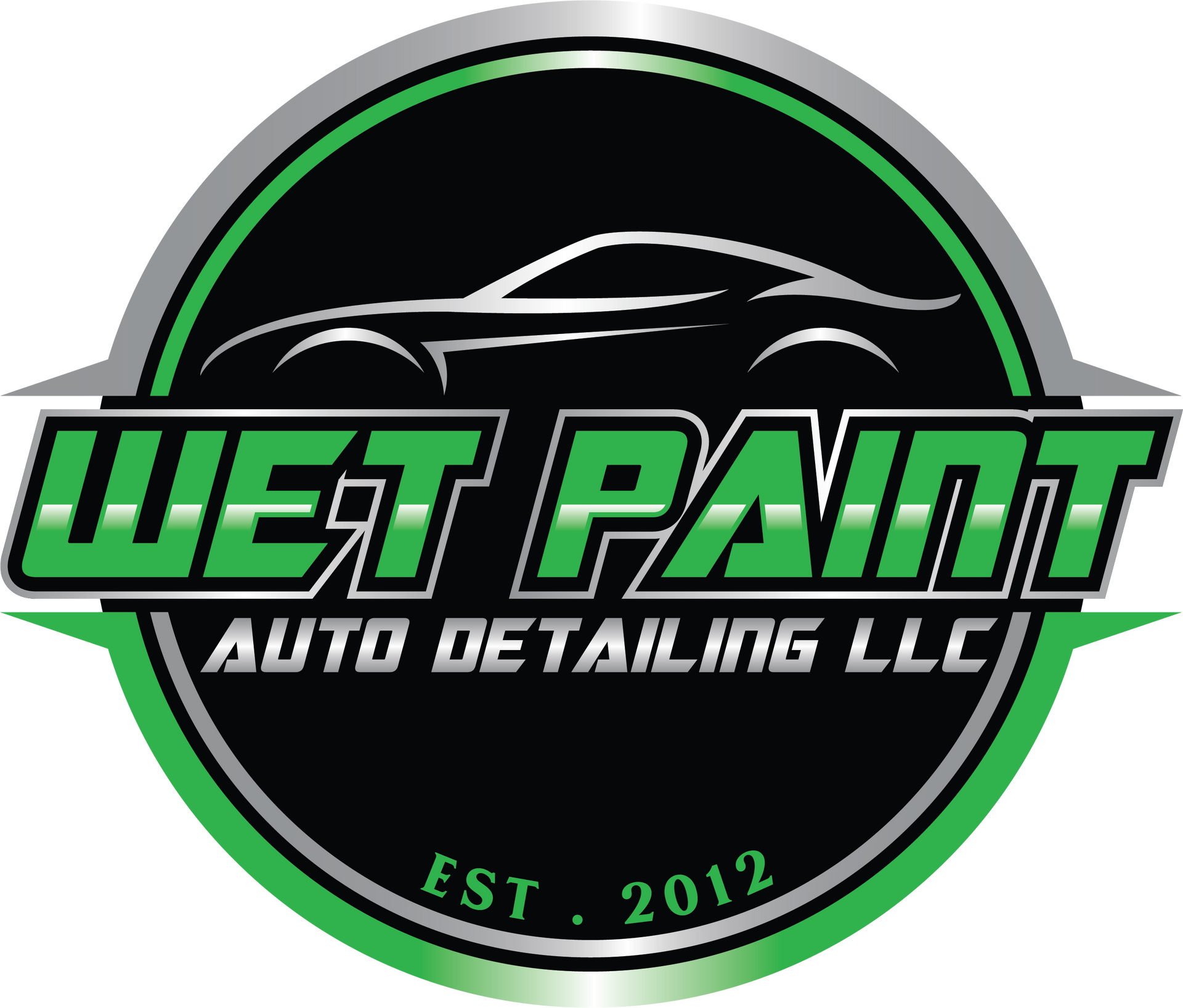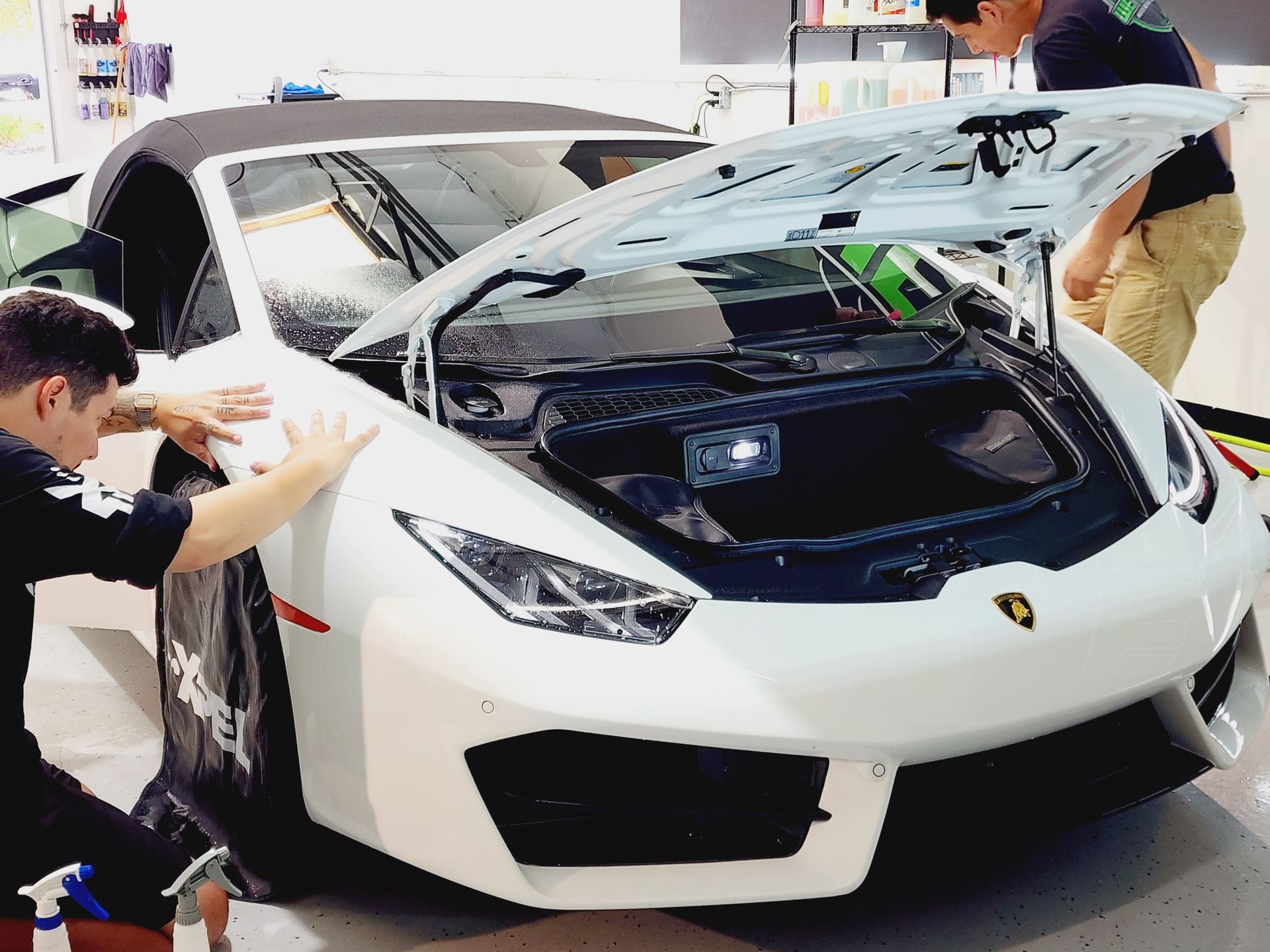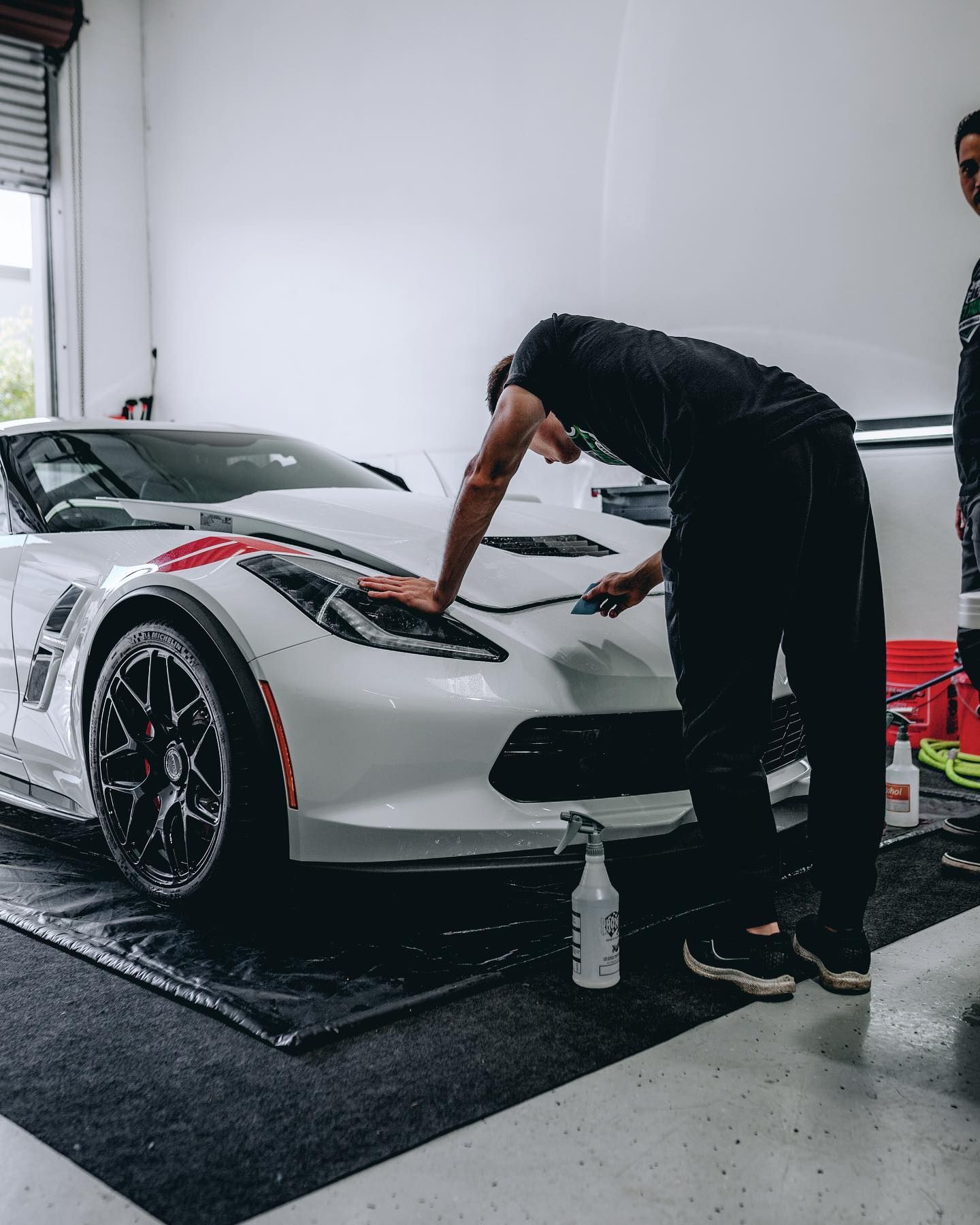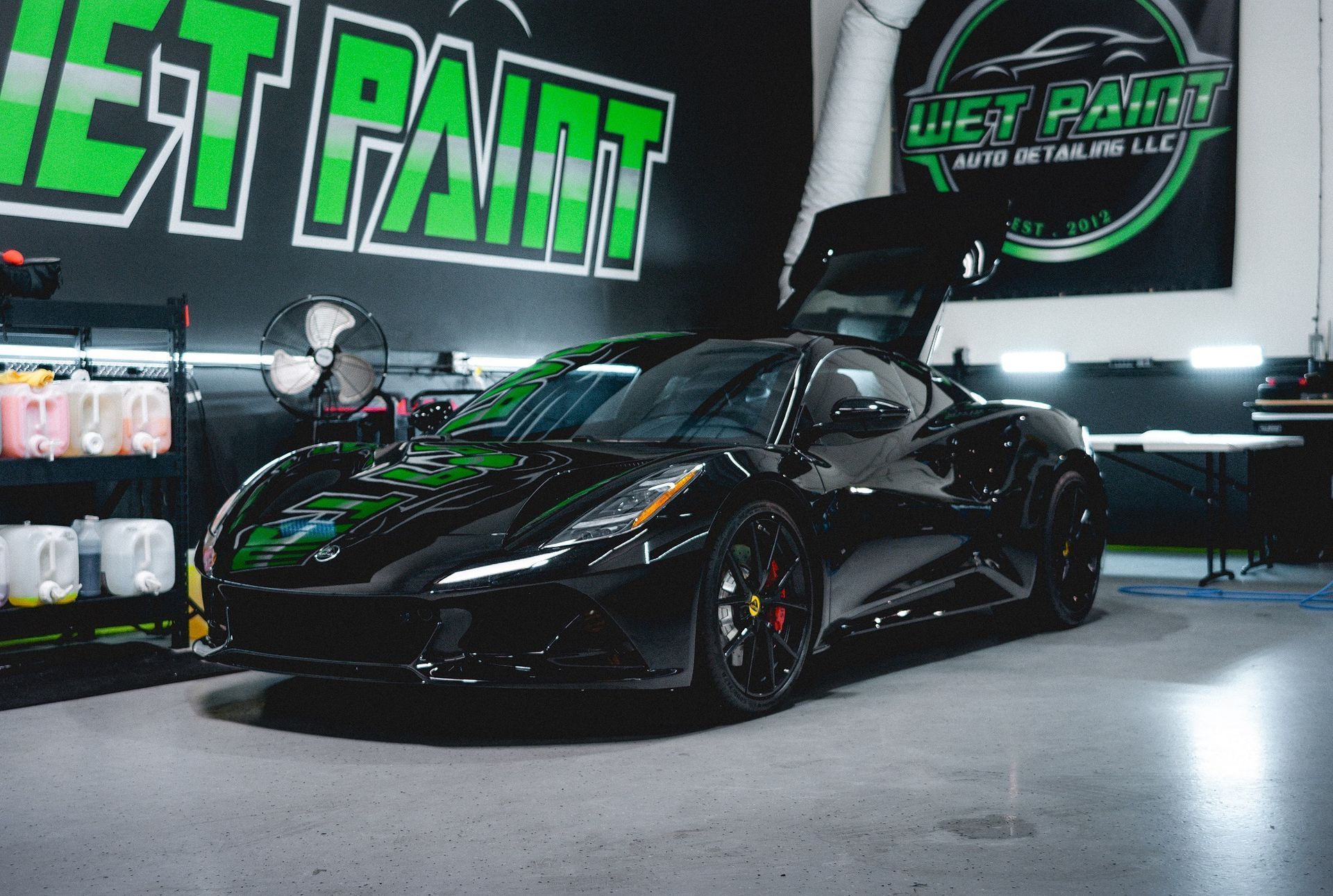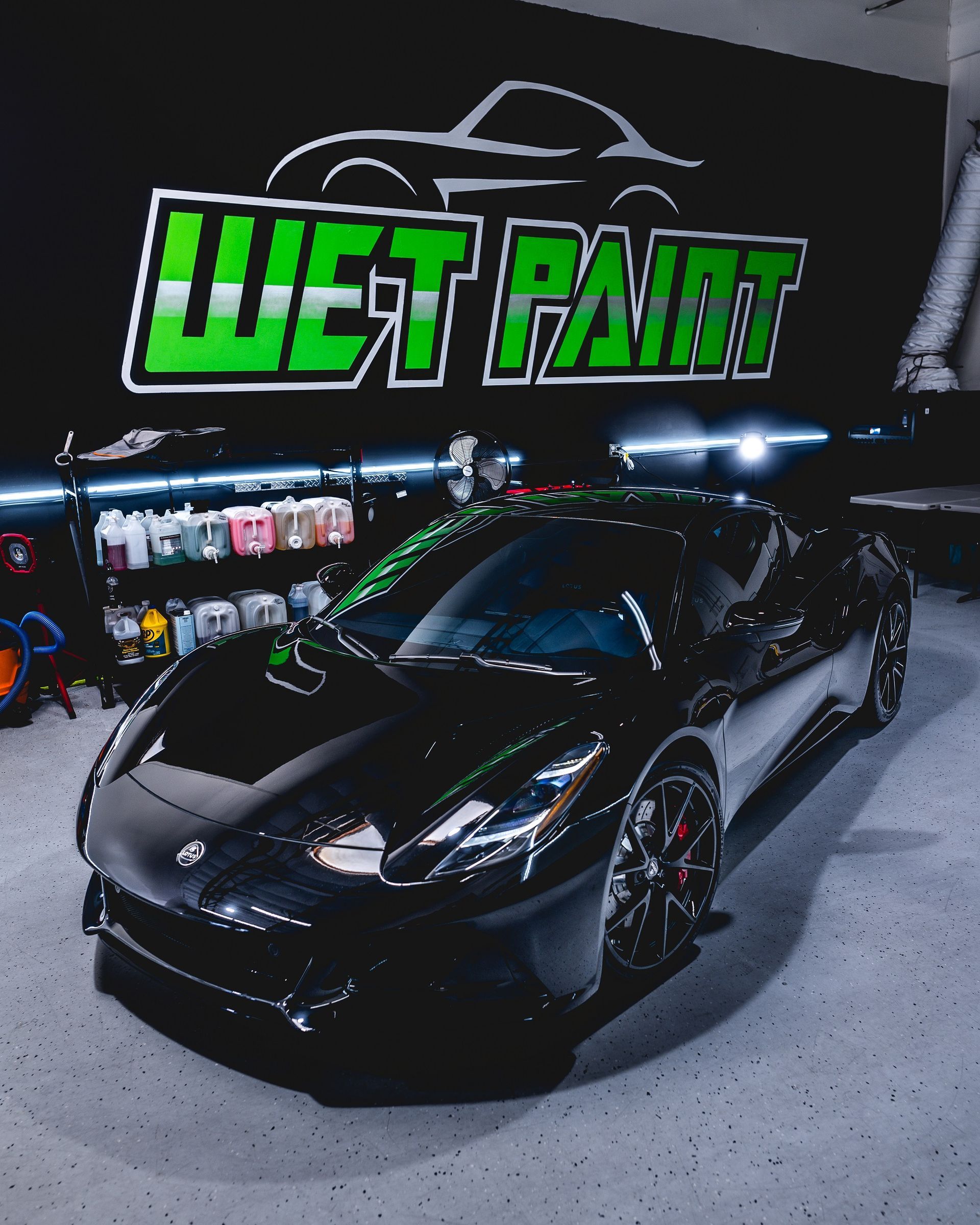Balancing the decision between tackling a paint protection film installation yourself or hiring a professional can feel like being at a crossroads. For many car enthusiasts, there's an undeniable allure in rolling up your sleeves and doing it yourself—saving money and savoring the satisfaction that comes with a job well done. A high-quality DIY PPF kit might set you back around $200-$300, giving you greater control over your schedule and budget. However, installing PPF isn't as simple as it sounds. Accurate cutting, precise application to avoid air bubbles, and handling tools like heat guns are skills often honed through experience. While you may save on labor costs, the time and patience required can be substantial.
The pros of DIY PPF installation include cost savings and flexibility in scheduling, allowing car owners to install the film at their convenience. However, the cons involve the need for significant skill and experience to avoid aesthetic issues, while professional installations guarantee superior quality and access to high-grade materials but come with increased costs and potential scheduling delays.
DIY PPF Installation: Overview
DIY (Do It Yourself) paint protection film installation provides car enthusiasts with a hands-on opportunity to safeguard their vehicles against scratches, chips, and environmental damage. The appeal lies in its potential for significant cost savings, as purchasing a DIY kit often eliminates hefty labor fees associated with professional installations. Instead of depending on someone else’s availability, you can work at your own pace and choose a time that fits seamlessly into your schedule.
For example, a DIY paint protection film kit from a reputable brand typically ranges from $200 to $500, depending on the specific vehicle size and quality of materials used. In contrast, a professional installation can easily climb to over $1,000, making DIY an attractive option for budget-conscious vehicle owners. However, it’s vital to understand that while the initial investment may seem lower, investing in quality materials and taking time to learn the installation technique can greatly affect the outcome.
While tackling a DIY paint protection film project may sound empowering, it does require commitment and attention to detail. The installation process is intricate; users must prepare surfaces meticulously, measure accurately, and install the film without creating air bubbles or misalignments. Missteps during this phase can lead not only to aesthetic disappointments but also potential long-term issues with the film's adhesion and overall effectiveness.
Additionally, consider that the success rate of DIY installations stands around 60%, meaning that nearly two out of five attempts do not meet user expectations. This statistic highlights both the challenge of achieving professional-level results and the importance of understanding proper techniques beforehand. Becoming familiar with the necessary tools is also essential. Commonly required items include a heat gun for shaping the film, a squeegee for smoothing out application, and a utility knife for trimming edges precisely. Having these tools handy increases the likelihood of a successful installation.
Therefore, evaluate your expectations carefully before diving into a DIY project; if you value precision and longevity without the learning curve, professional installation might be the better route.
Skills Required and Common Challenges
Installing paint protection film on your own requires more than just a cost-saving mindset; it involves mastering a range of specific skills that are crucial for a successful application. Below is a breakdown of key aspects to consider if you're thinking about a DIY approach.
- Precision Cutting: Accurate cutting is critical when installing a paint protection film. You must cut the film to precisely fit the vehicle’s complex contours, which is much harder than it seems. Even being off by a few millimeters can result in a misaligned and unattractive finish.
- Surface Preparation: Ensuring the vehicle’s surface is spotlessly clean is essential before applying a paint protection film. Any dirt or residue can cause bubbles during the installation, impacting both the appearance and the effectiveness of the film. Meticulous preparation is key to avoiding these issues.
- Application Technique: Applying PPF smoothly, without bubbles or creases, requires practice and a steady hand. Stretching the film correctly and using a heat gun effectively are skills that take time to develop. Misusing these techniques can cause the film to shrink or warp, leading to poor results.
- Risk of Air Bubbles and Peeling Edges: Air bubbles are one of the most frequent issues encountered during a DIY PPF installation. Even careful application can still result in trapped bubbles, which can be frustrating and costly to fix. Another common problem is peeling edges due to improper tensioning or adhesive methods. This can lead to the film lifting over time.
- Risk of Surface Scratches: Using tools like utility knives or handling the film without care during installation can scratch your vehicle’s paint. Without professional experience, even minor mistakes can cause lasting damage, which may outweigh the benefits of doing it yourself.
Understanding these critical skills and challenges will help you better assess whether to take on a DIY PPF installation or consider professional services for a more seamless result.
Professional PPF Installation: Overview
When you choose professional paint protection film installation, you're engaging with a level of expertise that goes beyond mere application techniques. Trained specialists have extensive experience working with various vehicle types and understand the nuances of their surfaces. This is crucial because no two vehicles are identical; factors such as curves, contours, and unique material finishes can all influence the installation process. This means much more than just adhering a vinyl sheet to your car; it requires close attention and precision that professionals excel at.
One significant advantage of opting for expert installation is access to high-quality materials that may not be readily available in DIY kits. These materials often include advanced films with self-healing properties or enhanced UV protection, offering up to 99% shielding from harmful sunlight and gradual wear. Additionally, professional installers commonly use tailored pre-cut kits designed specifically for your vehicle model, ensuring maximum coverage without the worry of misalignment or air bubbles—common pitfalls in DIY jobs. With this specialized equipment and techniques, professionals create a seamless finish that significantly outshines most DIY efforts.
The financial aspect also merits discussion; while the average cost for professional installation ranges from $1,500 to $2,500 or more for full coverage, this investment can be justified over time by extending the life of your vehicle's exterior. A well-executed paint protection film application not only protects against scratches and chips but can also enhance resale value down the road. Imagine trying to sell a car that looks pristine versus one with noticeable paint blemishes—there's a substantial difference in buyer perception.
Quality and Expertise Benefits
When you hire a professional for paint protection film installation, you benefit from their depth of knowledge and skill set.
- Expert Knowledge and Techniques: Expert knowledge and techniques play an essential role in achieving optimal results. Professionals spend years mastering their craft, studying the finer points that can make or break the installation process. They understand how to effectively apply PPF in a manner that minimizes the risk of imperfections, such as unsightly bubbles that can ruin the aesthetic appeal. Their training enables them to establish perfect adhesion with the vehicle's surface, creating a seamless layer of protection. This mastery extends to understanding the nuances related to different vehicle surfaces and PPF products themselves. For instance, trained installers are adept at recognizing when certain conditions might lead to issues during application, such as high humidity levels or extreme temperatures. They know how to adjust their techniques accordingly, ensuring that your PPF adheres properly regardless of the environment.
- Use of High-Quality Materials: The superior quality of PPF products employed by professionals is a game changer. Unlike typical DIY kits found at hardware stores, these high-grade films come with advanced characteristics that significantly enhance performance. Many professional-grade films boast impressive self-healing properties, meaning minor scratches can disappear with heat exposure—a feature simply not available in most DIY options. These high-quality materials offer increased clarity, which allows the original paint color to shine through unobstructed while adding a protective layer. In addition to durability, this high-quality film significantly contributes to longevity. Professional-grade PPF can withstand harsh environmental factors like UV rays and weather variations without degrading as quickly as lesser products might.
Thus, while the initial investment may be higher when opting for professional installation, the return on investment manifests itself through longer-lasting protection and fewer frequent replacements.
Cost Comparison of Both Methods
When considering the financial aspects of paint protection film installation, first impressions can be misleading. Although a DIY PPF kit ranges from $200 to $300, it seems like an appealing alternative to professional services that typically start around $1,000 and can go as high as $5,000. However, this disparity in upfront costs invites deeper scrutiny. For many enthusiasts, the allure of the DIY route lies in cost savings. However, it can quickly become a double-edged sword if things don’t go as planned. Consider this: during a DIY installation, you may misjudge measurements or apply the film incorrectly. If that happens, you're left with an unsatisfactory finish that doesn't protect your vehicle as intended. The result? You might end up hiring a professional to fix your errors, essentially erasing any monetary advantage you initially gained.
It’s essential to have a clear understanding of not only the direct costs involved but also the hidden expenses that can arise with improper installation. Keep in mind that with professional installations, you are not merely paying for materials; you're also investing in expertise and longevity. Many vendors offer warranties on their work—often spanning five to ten years—which can save you money down the line by preventing premature wear and tear. For those committed to the DIY method, it's vital to factor in additional costs. Beyond just the kit itself, consider potential expenditures for tools like squeegees and knives, which can run between $100 and $200. This puts the total DIY installation cost in the range of $300 to $500. But this still pales in comparison to a professional job—until you consider the quality and durability of both installations.
While DIY boasts an attractive price point, it carries inherent risks related to skill level and application technique that could lead to much higher long-term costs. Evaluating these decisions requires careful consideration of what you're willing to risk versus what you seek in terms of quality assurance over time.
Time and Effort Required
When considering how to handle your paint protection film application, it's essential to understand just how much of your time you’re willing to invest.
- DIY Time Commitment: A DIY installation is often alluring, especially for those who enjoy hands-on projects. However, this can translate into an intensive time investment, particularly for beginners. Setting aside a full day or potentially even longer is common when applying PPF for the first time. This includes preliminary steps like cleaning the vehicle thoroughly and ensuring that the surface is prepped meticulously. As if that wasn’t enough, there's also the meticulous application process itself, which often involves measuring, cutting, and adhering the film carefully to avoid unsightly mistakes. You'll probably find yourself pausing more than you'd like to correct those initial missteps since the stakes are high—minor errors can leave you with air bubbles or misalignments.
- Professional Efficiency: Unlike a DIY project where you're often learning as you go, professionals come equipped with years of experience that allow them to work much more efficiently. They have likely encountered most issues before and know how to tackle them swiftly without compromising quality. Typically, professional paint protection film installation can be completed in just a few hours; estimates range from four to eight hours for an entire vehicle wrap. This not only saves you precious hours but also lets you return to enjoying your vehicle faster than a DIY option would permit. Imagine preparing for a road trip or driving through town with your freshly protected car gleaming in the sunlight just days after you've taken it in for installation.
Weighing your available time against the skills you'll need is crucial when deciding your approach to PPF installation. If having your car ready promptly is high on your priority list, opting for professional help might be worth more than just upfront cost considerations.
Appearance and Durability Outcomes
When it comes to achieving that showroom finish, the difference between professional installation and a DIY approach often becomes readily apparent. While many enthusiasts may invest hours into perfecting their application technique, there is something to be said for the level of skill and experience that professionals bring to the table. Their training allows them to manipulate the film expertly, ensuring a seamless fit that enhances your vehicle's allure naturally. Achieving this flawless look is not often feasible for those who are inexperienced or lack specialized tools.
In terms of durability, professional installations frequently outshine their DIY counterparts. High-quality films used by professional installers not only promise longevity but often come with warranties as well. This means you get the added reassurance that your investment is protected for years to come against issues like peeling and bubbling. Unfortunately, many DIY installations might look impressive initially but can fall victim to wear and tear sooner than expected due to improper handling or subpar materials.
Taking these aspects into consideration will help you weigh whether to dive into a thrilling DIY project or seek out expert assistance based on your specific objectives for your vehicle’s protection and visual appeal. The choice between DIY and professional services ultimately hinges on weighing aesthetics, durability, and long-term maintenance—elements that will guide you toward making an informed decision aligned with your needs.
Professional PPF Services in Roseville, CA
Protect your vehicle's paint with
expert paint protection film (PPF) installation from Wet Paint Auto Detailing in Roseville, CA. Our top-quality paint protection film shields your car from road debris, scratches, and environmental damage while preserving its original finish. With precise application techniques and high-grade materials, your vehicle will stay in pristine condition for years to come. Secure the long-lasting protection your car deserves by scheduling your professional PPF service today. Call us at (916) 918-2289 to get started!
